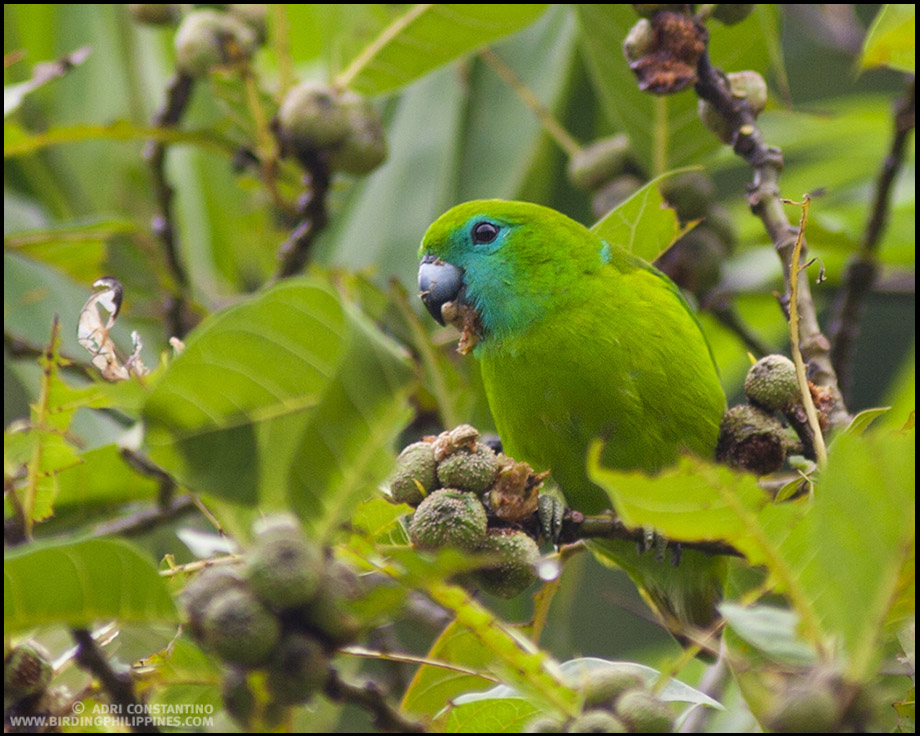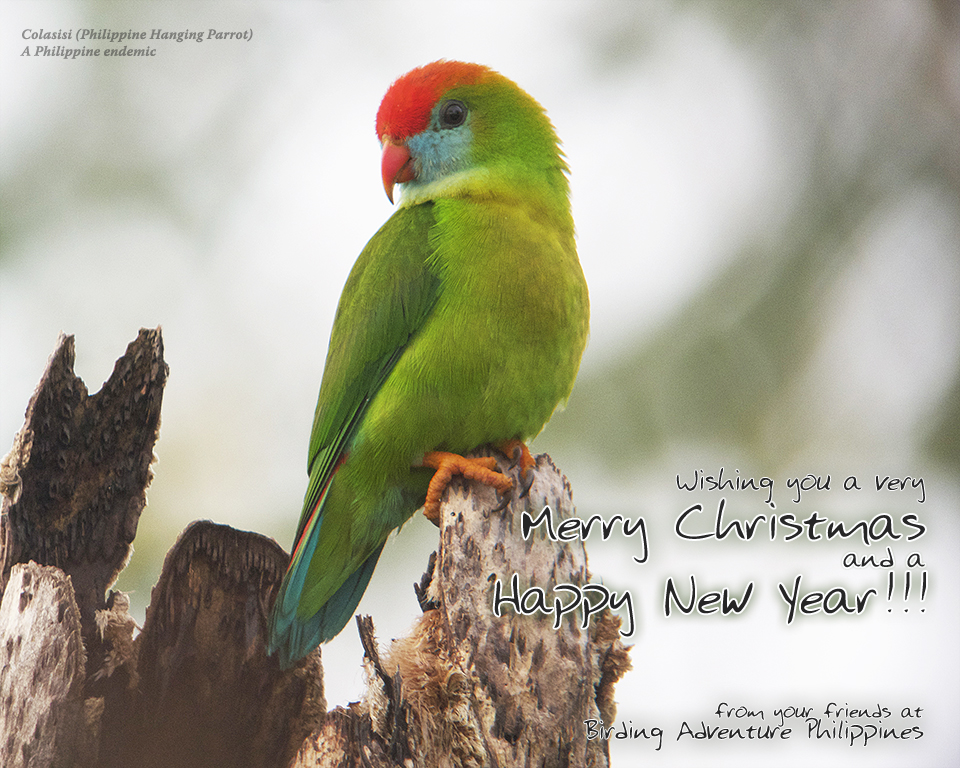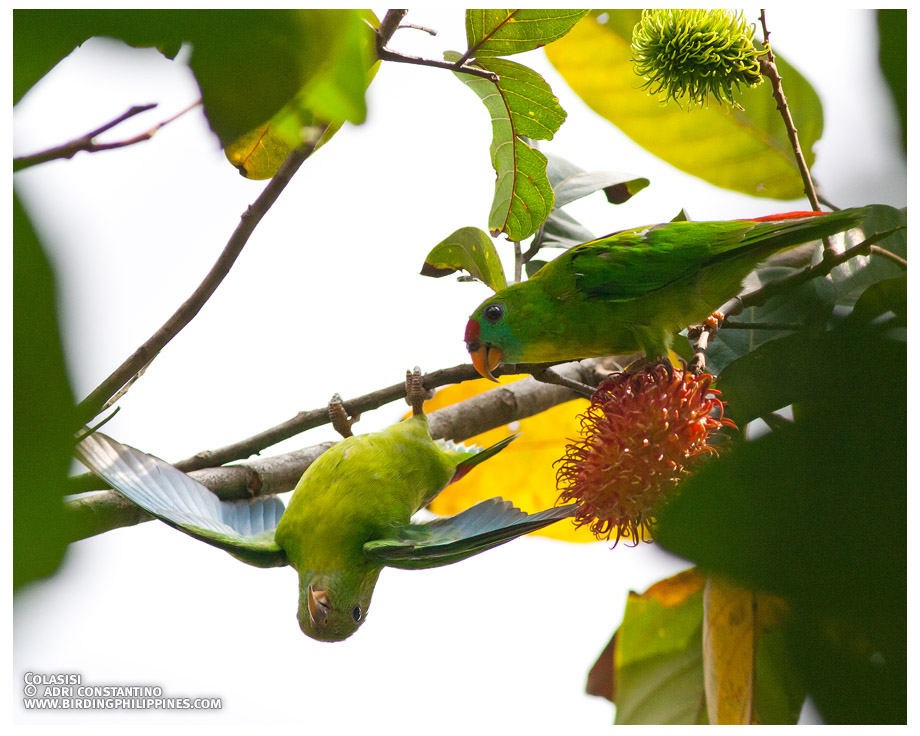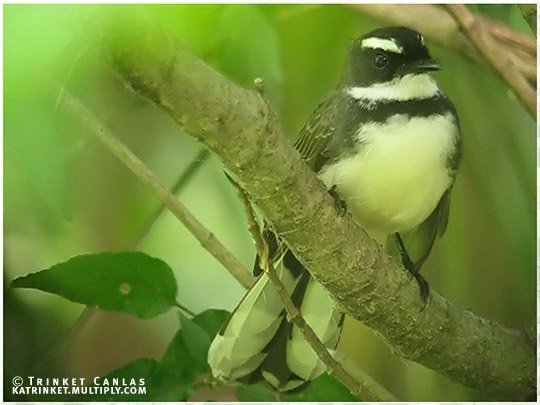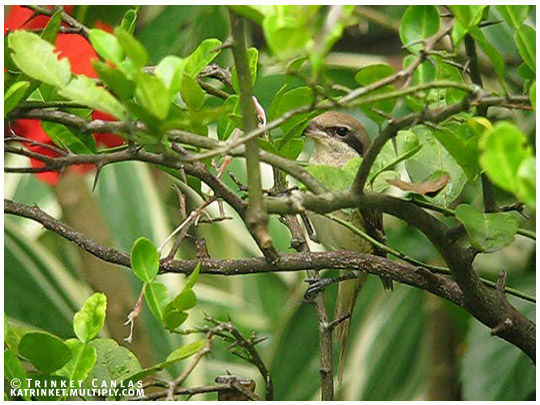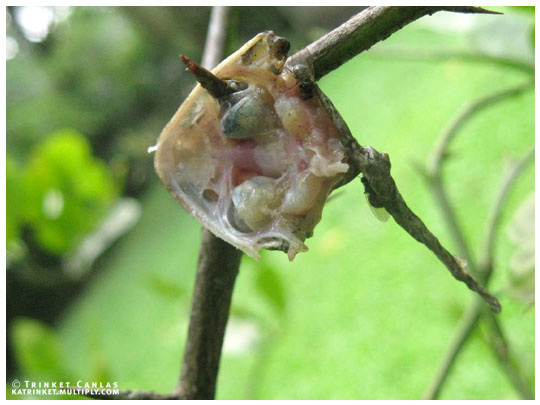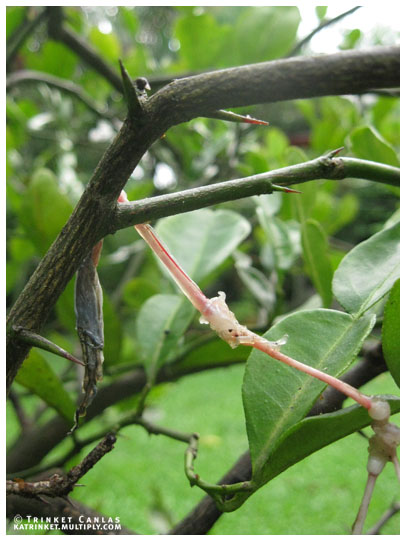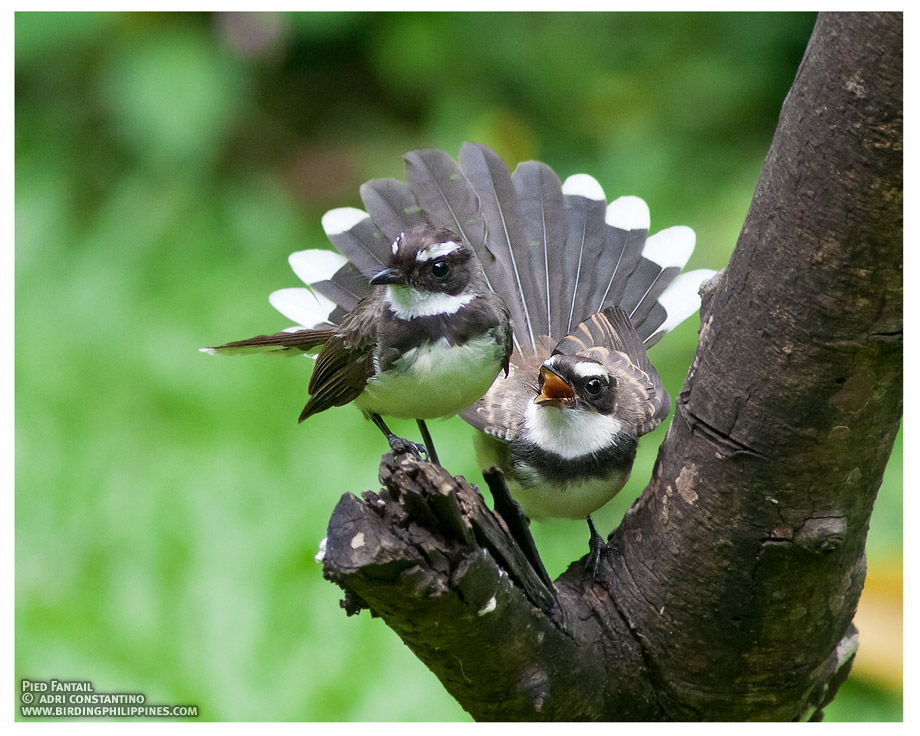A Pair of Guaiaberos
This is a pair of Guaiaberos inspecting a possible nest hole in La Mesa Ecopark, one of the remaining green spaces within Manila. Guaiaberos are endemic green parrots that can be found only in the islands of Luzon, Samar, Leyte and Mindanao. They are voracious fruit eaters preferring the fig tree locally known as "Tibig" (Ficus nota) and the Macaranga tree. They are usually seen in singles or in pairs but when the Tibig or Macaranga tree is fruiting, sometimes they can be seen in big flocks of 20 or more together with other frugivores like White-eared Brown Doves and Philippine Green Pigeons. The Guaiaberos' all green plumage blends well with the surroundings but they can be easily detected by their high pitched calls given in flight or when feeding.
The male Guaiabero has aqua blue lores, cheeks and chin and collar while the female has an almost green head with a yellowish gold collar. They build their nests in abandoned termite mounds in the big branches of trees.
A Pair of Guaiaberos, Bolbopsittacus lunulatus
March 2014, La Mesa Ecopark, Quezon City, Manila, Luzon, Philippines
Video by Adrian Constantino
Digiscoped with a Swarovski 80 ATM HD, Panasonic G3, Panasonic 20 mm F1.7 lens, Swarovski UCA (Universal Camera Adapter)

